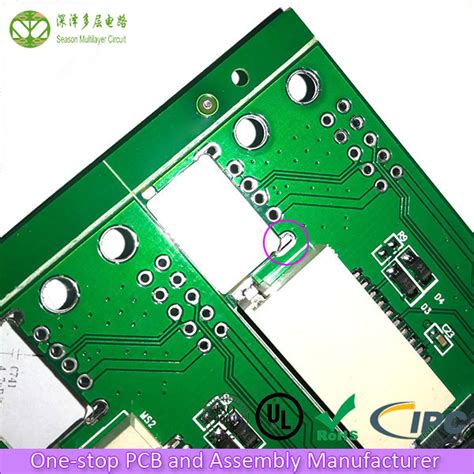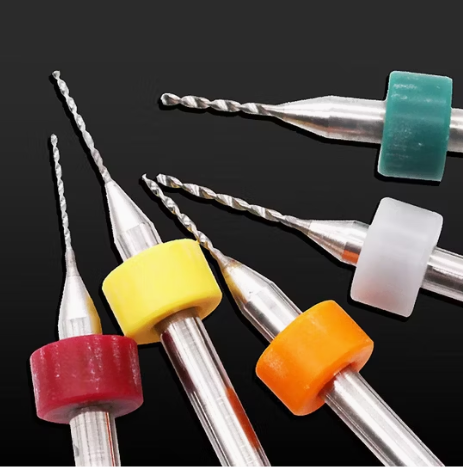Pcb prototype review
Key Factors To Consider In A PCB Prototype Review
When conducting a PCB prototype review, several key factors must be meticulously evaluated to ensure the final product meets the desired specifications and performance standards. The first aspect to consider is the design layout, which serves as the foundation of the PCB. A well-structured layout ensures that all components are correctly placed and that the electrical pathways are optimized for signal integrity and minimal interference. It is crucial to verify that the layout adheres to the design rules and constraints set forth during the initial planning stages.
Transitioning to the next critical factor, the choice of materials plays a significant role in the overall performance and durability of the PCB.
The substrate material, typically FR4, must be selected based on the specific requirements of the application, such as thermal stability, dielectric constant, and mechanical strength. Additionally, the quality of the copper cladding and the type of solder mask used can impact the board’s reliability and longevity. Ensuring that high-quality materials are used can prevent issues such as delamination, warping, and signal loss.
Another essential consideration is the manufacturing process itself.
The precision and accuracy of the fabrication techniques employed can significantly influence the prototype’s success. It is important to review the capabilities of the manufacturer, including their ability to produce fine-pitch components, multilayer boards, and complex via structures. Furthermore, the consistency of the manufacturing process should be assessed to ensure that each prototype produced meets the same high standards.
Moving forward, the electrical testing phase is a critical step in the PCB prototype review.
This involves conducting a series of tests to verify the electrical performance of the board, including continuity tests, insulation resistance tests, and impedance measurements. These tests help identify any potential issues such as short circuits, open circuits, or impedance mismatches that could affect the functionality of the final product. Additionally, signal integrity analysis should be performed to ensure that high-speed signals are transmitted without degradation or interference.
In addition to electrical testing, mechanical testing is also vital to assess the robustness of the PCB.
This includes evaluating the board’s ability to withstand physical stresses such as bending, vibration, and thermal cycling. Mechanical testing helps identify any weaknesses in the board’s construction that could lead to failure in real-world applications. Ensuring that the PCB can endure these stresses is particularly important for applications in harsh environments or where reliability is paramount.
Another factor to consider is the ease of assembly and rework.
The design should facilitate straightforward assembly processes, minimizing the risk of errors during component placement and soldering. Additionally, the ability to easily rework the board, such as replacing components or correcting defects, is an important consideration. This can be achieved by ensuring adequate spacing between components and providing access points for testing and rework.
Finally, the cost-effectiveness of the PCB prototype should be evaluated.
While it is important to prioritize quality and performance, it is also essential to consider the overall cost of production. This includes not only the cost of materials and manufacturing but also the potential costs associated with testing, assembly, and rework. Balancing these factors can help achieve a prototype that meets both technical and budgetary requirements.
In conclusion, a thorough PCB prototype review involves a comprehensive evaluation of design layout, material selection, manufacturing processes, electrical and mechanical testing, assembly ease, and cost-effectiveness. By carefully considering these factors, one can ensure that the final product is reliable, efficient, and ready for mass production.
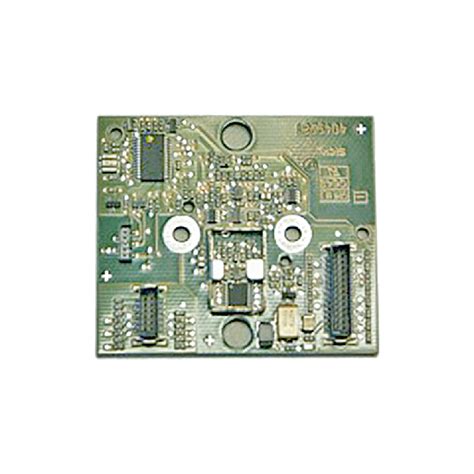
Common Mistakes To Avoid During PCB Prototype Review
When undertaking a PCB prototype review, it is crucial to be aware of common mistakes that can significantly impact the final product’s functionality and reliability. One of the most frequent errors is neglecting to thoroughly check the design for electrical rule violations. Overlooking these violations can lead to short circuits, open circuits, or other electrical issues that may not be immediately apparent but can cause significant problems during the testing phase or, worse, in the final product.
Another common mistake is inadequate attention to component placement and orientation.
Proper placement is essential for ensuring that the PCB functions as intended and that components do not interfere with each other. Misplaced components can lead to signal integrity issues, increased electromagnetic interference, and even physical damage during assembly. It is also important to verify that all components are oriented correctly, as incorrect orientation can result in malfunctioning circuits and costly rework.
Transitioning to the topic of trace routing, it is essential to avoid the mistake of improper trace width and spacing.
Trace width must be carefully calculated based on the current-carrying requirements of the circuit. Insufficient trace width can lead to overheating and potential failure of the PCB. Similarly, inadequate spacing between traces can result in short circuits, especially in high-voltage applications. Ensuring that traces are appropriately sized and spaced is a fundamental aspect of a successful PCB design.
Furthermore, overlooking the importance of thermal management can be detrimental.
Components that generate significant heat need to be adequately cooled to prevent overheating and ensure long-term reliability. Failing to incorporate sufficient thermal vias, heat sinks, or other cooling mechanisms can lead to thermal issues that compromise the PCB’s performance. It is essential to conduct a thermal analysis during the prototype review to identify and mitigate potential hot spots.
In addition to thermal management, another critical aspect is the power distribution network (PDN) design.
A common mistake is not providing adequate decoupling capacitors close to the power pins of integrated circuits. This oversight can lead to power integrity issues, such as voltage drops and noise, which can adversely affect the performance of the PCB. Ensuring a robust PDN design with appropriate decoupling capacitors is vital for maintaining stable power delivery to all components.
Moreover, it is important to avoid the mistake of insufficient documentation and labeling.
Clear and comprehensive documentation is essential for the assembly, testing, and troubleshooting of the PCB. Failing to provide detailed schematics, bill of materials (BOM), and assembly drawings can lead to confusion and errors during the manufacturing process. Proper labeling of components and test points on the PCB itself also facilitates easier debugging and maintenance.
Lastly, it is crucial to conduct a thorough design for manufacturability (DFM) review.
Ignoring DFM guidelines can result in a design that is difficult or costly to manufacture. This includes ensuring that the PCB layout adheres to the fabrication capabilities of the chosen manufacturer, such as minimum trace width, spacing, and hole sizes. Additionally, considering the assembly process, such as the placement of test points and the accessibility of components for soldering, can prevent issues during production.
In conclusion, avoiding these common mistakes during a PCB prototype review is essential for ensuring a functional, reliable, and manufacturable final product. By paying careful attention to electrical rules, component placement, trace routing, thermal management, power distribution, documentation, and manufacturability, designers can significantly reduce the risk of errors and achieve a successful PCB prototype.
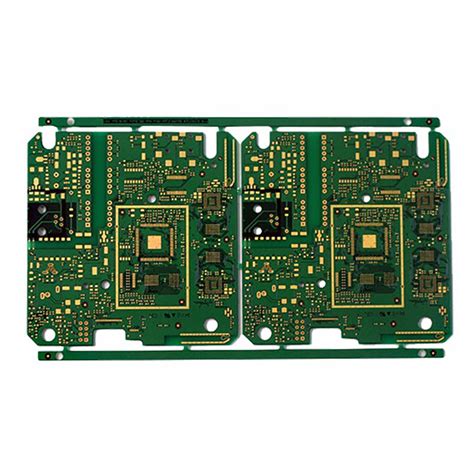
The Importance Of Thorough Testing In PCB Prototype Review
In the realm of electronics, the development of printed circuit boards (PCBs) is a critical process that demands meticulous attention to detail. The importance of thorough testing in PCB prototype review cannot be overstated, as it serves as the foundation for ensuring the reliability, functionality, and overall quality of the final product. As the complexity of electronic devices continues to increase, so too does the necessity for rigorous testing protocols during the prototype phase.
To begin with, thorough testing in PCB prototype review is essential for identifying and rectifying design flaws.
During the initial stages of PCB development, engineers create a prototype to evaluate the design’s feasibility and performance. This prototype serves as a preliminary model that allows for the detection of potential issues that may not be apparent during the design phase. By conducting comprehensive tests, engineers can uncover problems such as signal integrity issues, thermal management concerns, and component placement errors. Addressing these issues early in the development process can prevent costly revisions and delays in the production timeline.
Moreover, thorough testing ensures that the PCB meets the required performance standards and specifications.
In many industries, PCBs must adhere to stringent regulatory requirements and industry standards. For instance, in the medical and aerospace sectors, PCBs must demonstrate high levels of reliability and durability. Through rigorous testing, engineers can verify that the prototype meets these standards, thereby ensuring that the final product will perform as expected in real-world applications. This not only enhances the product’s credibility but also mitigates the risk of failures that could have severe consequences.
In addition to identifying design flaws and ensuring compliance with standards, thorough testing in PCB prototype review plays a crucial role in optimizing the manufacturing process.
By evaluating the prototype’s performance under various conditions, engineers can gain valuable insights into potential manufacturing challenges. For example, testing can reveal issues related to soldering, component alignment, and assembly processes. With this information, manufacturers can make necessary adjustments to their production methods, thereby improving yield rates and reducing the likelihood of defects in the final product.
Furthermore, thorough testing facilitates the validation of the PCB’s functionality and performance.
During the prototype review, engineers conduct a series of tests to assess the board’s electrical characteristics, such as impedance, capacitance, and resistance. These tests help to ensure that the PCB will function correctly within the intended application. Additionally, environmental testing, such as thermal cycling and humidity exposure, can simulate real-world conditions to evaluate the board’s durability and reliability. By validating the prototype’s performance through these tests, engineers can have confidence that the final product will meet the desired specifications and perform reliably over its intended lifespan.
Lastly, thorough testing in PCB prototype review fosters continuous improvement and innovation.
The insights gained from testing can inform future design iterations, leading to the development of more advanced and efficient PCBs. By systematically analyzing test results and identifying areas for improvement, engineers can refine their designs and push the boundaries of what is possible in PCB technology. This iterative process of testing and refinement ultimately drives innovation and contributes to the advancement of the electronics industry.
In conclusion, the importance of thorough testing in PCB prototype review is multifaceted, encompassing the identification of design flaws, compliance with standards, optimization of manufacturing processes, validation of functionality, and fostering of continuous improvement. As electronic devices become increasingly complex, the need for rigorous testing protocols during the prototype phase becomes ever more critical. By prioritizing thorough testing, engineers can ensure the development of reliable, high-quality PCBs that meet the demands of modern applications.
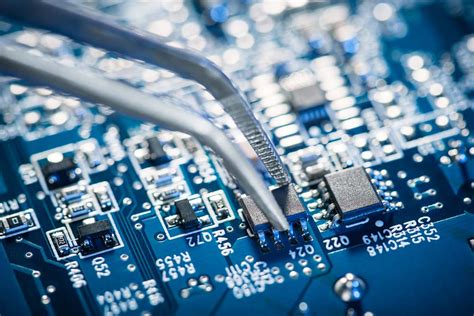
How To Streamline Your PCB Prototype Review Process
Streamlining the PCB prototype review process is essential for ensuring efficiency, reducing costs, and maintaining high-quality standards in electronic product development. The process can be intricate, involving multiple stages and stakeholders, but with a structured approach, it can be significantly optimized. To begin with, it is crucial to establish clear objectives and criteria for the review. Defining what constitutes a successful prototype, including performance metrics, compliance with design specifications, and manufacturability, sets a solid foundation for the review process.
One of the first steps in streamlining the review process is to ensure thorough documentation.
Comprehensive documentation, including schematics, layout files, and bill of materials (BOM), provides a clear reference for all parties involved. This documentation should be meticulously maintained and updated to reflect any changes or iterations. By having detailed records, reviewers can quickly identify discrepancies and areas that require attention, thereby reducing the time spent on back-and-forth communications.
Another critical aspect is the involvement of cross-functional teams early in the process.
Engaging engineers, designers, and manufacturing experts from the outset ensures that all perspectives are considered. This collaborative approach helps in identifying potential issues that might not be apparent to a single team. Regular meetings and reviews with these stakeholders can preemptively address concerns, leading to a more robust prototype. Additionally, leveraging design for manufacturability (DFM) principles during the initial design phase can mitigate production challenges later on.
Utilizing advanced software tools can also significantly enhance the review process.
Computer-aided design (CAD) software with built-in simulation capabilities allows for virtual testing of the PCB design before physical prototyping. These tools can identify potential electrical and thermal issues, enabling designers to make necessary adjustments early. Furthermore, version control systems can track changes and ensure that all team members are working with the most current design files, thus avoiding confusion and errors.
Another effective strategy is to implement a standardized checklist for the review process.
This checklist should cover all critical aspects of the PCB design, including electrical performance, mechanical fit, thermal management, and compliance with industry standards. By systematically going through this checklist, reviewers can ensure that no critical element is overlooked. This methodical approach not only saves time but also enhances the thoroughness of the review.
Communication plays a pivotal role in the review process.
Establishing clear channels of communication and setting expectations for response times can prevent delays. Utilizing project management tools to track progress and assign tasks can keep the team aligned and focused. Regular updates and feedback loops ensure that any issues are promptly addressed, and the project stays on track.
Finally, conducting a post-review analysis is essential for continuous improvement.
After the prototype review is completed, gathering feedback from all stakeholders can provide valuable insights into what worked well and what could be improved. This feedback should be documented and used to refine the review process for future projects. By learning from each iteration, the team can develop a more efficient and effective review process over time.
In conclusion, streamlining the PCB prototype review process involves a combination of clear objectives, thorough documentation, cross-functional collaboration, advanced software tools, standardized checklists, effective communication, and continuous improvement. By adopting these strategies, organizations can enhance the efficiency and quality of their PCB prototypes, ultimately leading to more successful electronic products.


